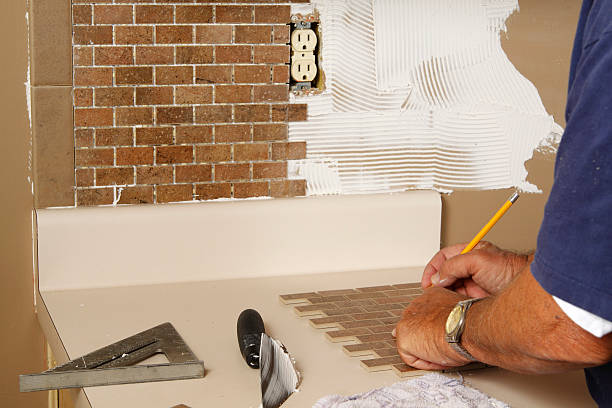DIY Tips for Drywall Installation: A Comprehensive Homeowner’s Guide
Drywall installation can seem daunting, especially for first-time DIYers. However, with the right preparation and techniques, it’s a project you can tackle successfully on your own. This guide covers everything you need to know about drywall installation, from essential tools and materials to step-by-step instructions and expert tips.
Why Choose DIY Drywall Installation?
Opting to install drywall yourself can save you significant costs and provide a sense of accomplishment. It’s an excellent project for anyone looking to improve their home, whether you’re finishing a basement, renovating a room, or repairing damaged walls. The DIY approach allows for customization and gives you control over the quality of the work.
Tools and Materials Needed for Drywall Installation
Before you start, gather all the necessary tools and materials. Having the right equipment makes the job easier and helps ensure a professional finish.
- Drywall Sheets: Choose the right thickness (1/2-inch or 5/8-inch) depending on the room’s needs.
- Drywall Screws: Use coarse-thread drywall screws for wood studs or fine-thread screws for metal studs.
- Utility Knife: Essential for cutting drywall sheets to size.
- Drywall Tape and Joint Compound: For sealing seams and creating a smooth surface.
- Sanding Block or Pole Sander: To smooth out the joint compound after it dries.
- Drywall Saw: Handy for making precise cuts for outlets, windows, or doorways.
- Level and Measuring Tape: Ensure your cuts and placements are accurate.
Preparing the Room for Drywall Installation
Proper preparation is crucial for a successful drywall project. Here’s what you need to do before hanging the first sheet:
- Clear the Area: Remove furniture and cover floors to protect them from dust and debris.
- Inspect the Studs: Check the framing for any damage or irregularities. Ensure studs are evenly spaced (usually 16 or 24 inches apart).
- Measure and Mark: Measure the walls and mark the locations of electrical outlets, windows, and doors on the drywall sheets.
Pro Tip: Use a stud finder to locate and mark studs for easy screw placement.
Step-by-Step Guide to Installing Drywall
Follow this simple guide to get your drywall installed like a pro:
Cut the Drywall Sheets
Using a utility knife, score the drywall along the cut line, then snap it to create a clean edge. Make cuts for outlets, windows, and other openings before securing the sheets.
Hang the Drywall
Start by hanging the top sheets horizontally. Secure them to the studs using drywall screws spaced about 12-16 inches apart. Be sure not to drive screws too deep, as this can damage the drywall surface.
Tape the Seams
Apply drywall tape along all seams and joints. This step helps prevent cracks and creates a smooth surface.
Apply Joint Compound
Use a putty knife to spread a thin layer of joint compound over the tape. Feather the edges to blend it with the surrounding drywall.
Sand and Finish
Once the joint compound is completely dry, sand the surface smooth. Be gentle to avoid damaging the tape or drywall underneath.
Visit HD Drywall Services for professional help if you prefer to leave the finishing touches to the experts.
Common Mistakes to Avoid When Installing Drywall
Even the best DIYers can make mistakes during drywall installation. Here are some common pitfalls and how to avoid them:
- Overdriving Screws: Tightening screws too much can damage the drywall and require additional repairs.
- Skipping the Primer: Always apply primer before painting to ensure a smooth, even finish.
- Neglecting Safety: Drywall installation creates dust. Wear a mask and goggles to protect your lungs and eyes.
Pro Tip: Use lightweight joint compound for easier sanding and a smoother finish.
How to Repair Drywall Mistakes
Mistakes are part of the learning process, especially for DIY projects. Here’s how to fix common drywall issues:
- Small Holes: Use a patch kit and joint compound to cover small holes. Sand it smooth once dry.
- Cracks: Apply drywall tape over cracks, then cover with joint compound. Feather the edges to blend with the wall.
- Bumpy Seams: If seams look uneven, sand them down and reapply joint compound as needed.
For more complex repairs, consider contacting a professional at HD Drywall.
FAQs About DIY Drywall Installation
What thickness of drywall should I use? For most interior walls, 1/2-inch drywall is standard. However, 5/8-inch drywall offers better soundproofing and fire resistance, making it ideal for ceilings and shared walls.
Can I install drywall on my own, or do I need help? While it’s possible to install drywall solo, having a second person can make the job easier, especially when lifting and positioning large sheets.
How long does it take to install drywall? The time required depends on the size of the project. A single room can take anywhere from one to three days, including taping, mudding, and sanding.
What’s the difference between joint compound and spackle? Joint compound is used for seams and large areas, while spackle is better for small holes and quick fixes.
Should I use nails or screws for drywall installation? Drywall screws are preferred because they offer better holding power and are less likely to pop out over time.
How do I know if I need to replace drywall instead of just repairing it? If the drywall is extensively water-damaged, has mold, or is severely cracked, replacement may be necessary. Contact a professional for an assessment.
Conclusion
Installing drywall yourself can be a rewarding project that adds value to your home. By following these DIY tips for drywall installation, you’ll achieve professional-quality results while saving money. Whether you’re working on a small repair or a full room renovation, this guide will help you every step of the way.
If you’re not comfortable taking on the entire project, consider reaching out to HD Drywall for expert assistance.






